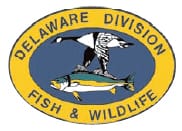Delaware Division Of Fish And Wildlife Seeks Volunteers To Monitor Frog Calling
Orientation meeting set for March 10 at the St. Jones Reserve in Dover.


DOVER, Delaware –-(Ammoland.com)- The sound of frogs calling in the night is more than just a sign of spring’s arrival.
Frog calls can also be an important way to determine where different species live and how populations are doing over time – and many scientists now believe keeping track of these small amphibians can provide valuable information about our natural world.
“Frogs, toads and other amphibians have received more attention over the last few years as scientists and the public have become increasingly alarmed over amphibian declines and deformities. Because amphibians are aquatic for at least part of their life cycle, they can serve as important indicators of water quality and other aspects of environmental health,” said Holly Niederriter, a wildlife biologist with the Delaware Natural Heritage and Endangered Species Program.
Concern over declines in amphibian populations has prompted the initiation of amphibian monitoring programs in North America and around the world, Niederriter added. The Delaware Amphibian Monitoring Project (DAMP) is our local chapter of a national effort called the North American Amphibian Monitoring Program.
This spring, DAMP is seeking volunteers to conduct surveys of calling frogs around the state. Volunteers with DAMP are assigned a route in one portion of the state, and they conduct surveys by listening for calling frogs at stops along the route, where they record the species they hear and general number of frogs calling. A number of routes have yet to be assigned in Delaware, particularly in Sussex and Kent counties.
An orientation meeting will be held from 6 to 8:30 p.m. on Thursday, March 10 at the St. Jones Reserve in Dover, with a training CD and other information to be provided. Potential volunteers need to have a car, access to the internet and be willing to conduct surveys along a roadside at night. After volunteers learn the calls of Delaware’s 16 frog species, they conduct three nighttime surveys between February and July each year. Each survey takes between two to three hours, not including drive time to the start point. This is a long-term project and is best suited for volunteers who are able to commit to conducting surveys for at least a few years.
To find out more about volunteering for DAMP, please contact Vickie Henderson or Lauren Johnson, Delaware Division of Fish and Wildlife, at 302-735-8651 or via e-mail Vickie.Henderson@state.de.us or Lauren.Johnson@state.de.us. Preregistration for the orientation is encouraged but not required. Information is also available by visiting the national project website, www.pwrc.usgs.gov/naamp/.
DAMP was started in 1997 and is part of the North American Amphibian Monitoring Program (NAAMP), which helps to coordinate similar efforts in other states and provinces. The program is funded by donations to the Nongame and Endangered Species Fund on the Delaware state income tax form. You can donate all or a portion of your state tax refund to keep frogs singing in Delaware.
